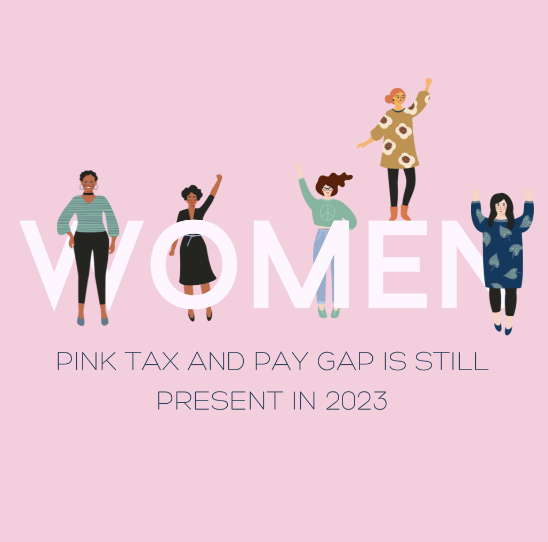How pink tax and the pay gap still exists
April 28, 2023
Although the “pink tax” isn’t a legitimate government tax, it is a real thing.
“Pink tax” refers to the unfair pricing that inflates the cost of products geared towards women like clothings and toys, services, feminine care products, and even the gender pay gap.
“We have seen some very clear evidence that if a seller will take two identical products, make one pink and make one blue, and the pink one may have some more flowery packaging, and appears to be a little more geared towards a female audience, they can charge more for that. And sometimes it’s striking,” Economics teacher Mr. Greg Simmons said.
Essentials for hygiene like shampoo, razors, body wash, and lotions cost almost 13% more for products geared towards women than their male counterparts, according to a study done by The Balance.
“There are a lot of economists who have talked about how this is something that fundamentally represents inequality. And it’s an odd inequality considering the fact that, we’re not talking about abusing a small minority of the population, or taking advantage, women generally make up 50% of the population,” Simmons said.
Not only is there a difference in price for consumer products and services, there is a difference when it comes to the workplace.
“The fact that this is still something that we (as women) have to deal with on a daily basis is absolutely ridiculous, especially for women in lower income communities. There had to be change soon and fast,” senior Angela Karr said.
In almost 20 years, the gender pay gap hasn’t changed. In 2022, women earned 82%, on average, of what men earned for full-time earnings and parttime.
The wage gap primarily affects POC and marginalized groups of women. While on average a woman earns $0.82 for every dollar a white man earns, Black women make $0.62, and Hispanic or Latina women get $0.58 for every white man’s dollar.
According to Harvard Business Review, “A significant body of research (see “Further Reading”) shows that for women, the subtle gender bias that persists in organizations and in society disrupts the learning cycle at the heart of becoming a leader.”
One place that inequality starts is through educational opportunities.
“In order to address this issue you must first address the inherent inequality in the educational system and provide equal opportunities in school and more accessibility to higher education,” senior Kate Johnson said.
As you move up the workplace chain, full-time female managers earned 71 cents for every dollar earned by full-time male managers, and this pay gap differs significantly for each racial and ethnic group.
“When my sister and I started getting more involved in school, the more I realized that we had the conversation of ‘not letting the boys talk over you’ or ‘not letting the boys undermine your opinion’. It’s something that I’ve always been used to, but honestly it shouldn’t be something that we are used to. It’s super disappointing,” senior Sydney Rubienstien said.








Jason • May 1, 2023 at 7:18 pm
If women started switching to men’s/unisex products (where otherwise near-identical) to save money, would sellers reduce their pink fees? It seems like it would be a good way to reduce the prevalence of pink fees.